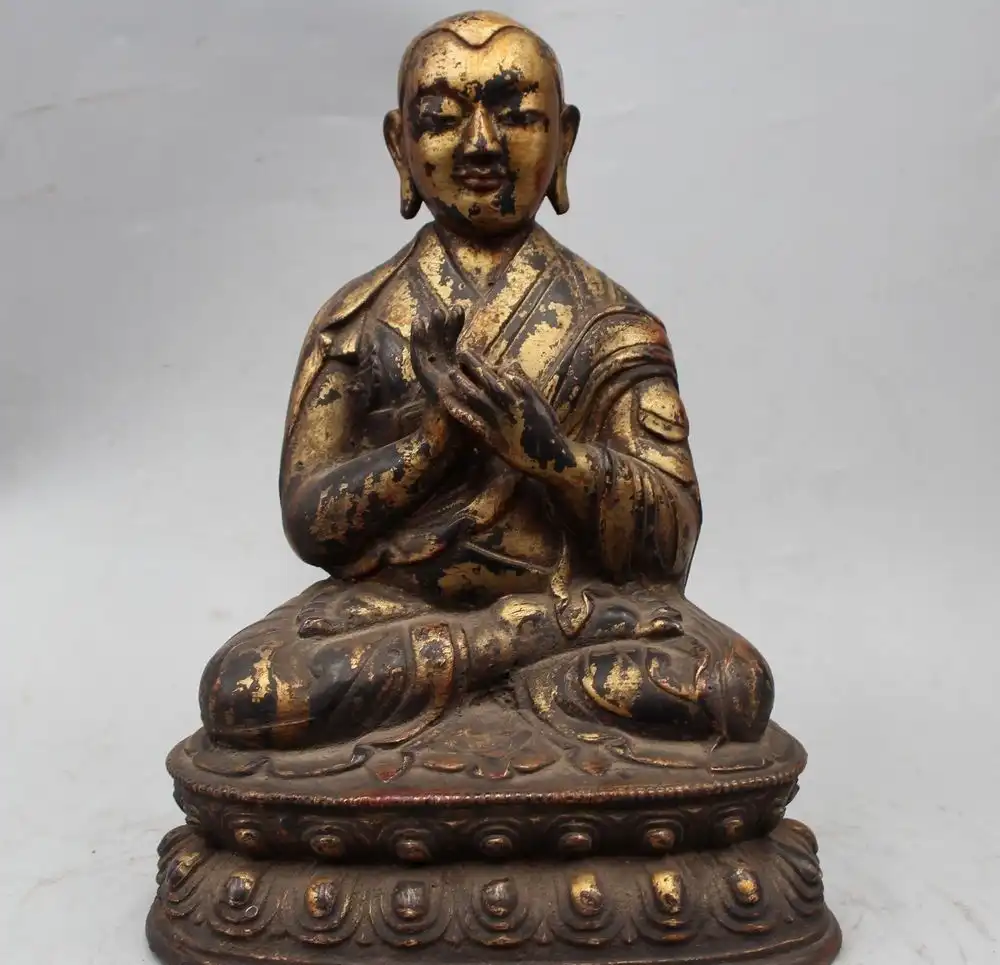+Tibetan-China Qing Dynasty 18th Century Circa 1800 Seated Buddha Deity Carved In White Marble
Tibetan sculpture of a seated Buddha from the Qing Dynasty (1644-1911).
A three-dimensional antique sculpture of a seated Buddha (Bodhisattva), realized in the late 18th and early19th century, circa 1800, during the Qing Dynasty (1644-1911) period of the Imperial China. It is most probably made in the Tibetan region.
This delicate sculpture was carved from a single piece of white marble, with the peaceful figure of Buddha in meditation and praying mudra position, seated on a lotus throne. This piece exhibits very smooth surfaces with realistic details and the work on the size is outstanding.
Has a measures of 255 mm by 133 mm by 74 mm (10 x 5.25 x 2.9 Inches). Has a weight of 9.5 Pounds (4.31 Kilos).
The Qing dynasty, officially the Great Qing, was the Manchu-led last dynasty in the imperial history of China. It was proclaimed in 1636 in Manchuria (modern-day Northeast China), in 1644 entered Beijing, extended its rule to cover all of China proper, and then extended the empire into Central Asia. The dynasty lasted until 1912. In orthodox Chinese historiography, the Qing dynasty was preceded by the Ming dynasty and succeeded by the Republic of China. The multiethnic Qing empire lasted for almost three centuries and assembled the territorial base for modern China. It was the largest Chinese dynasty and in 1790 the fourth largest empire in world history in terms of territorial size. With a population of 432 million in 1912, it was the world's most populous country at the time.
Qing Dynasty decorative arts, many craftsmen worked in the imperial court, producing artifacts for palace use: everything from items of jewelry art to beautiful Chinese lacquerware, including lacquered imperial thrones: see, for instance, the Qing Dynasty Imperial Throne (1775-80, Victoria and Albert Museum, London). The Imperial Household Department managed a number of crafts workshops both within the Forbidden City and outside it. Some of the skilled workers and master craftsmen were on permanent duty, like those in the imperial glass factory established in 1696 under the direction of the German Jesuit Kilian Stumpf (1655-1720). Other experts in gemstones carving, horn and jade sculpture and metallurgy were summoned to Beijing for a specific period of service.

Tibet temple Buddhism Bronze Seat Lama Guru Buddhist monk
Provenance: A private collection in New York city collected in the 1964; T.K. Asian antiquities gallery, Williamsburg Virginia; a private collection in Palm Beach FL; then purchased by James & Nancy Markell, Virginia 1976; then by descent to Lauren Markland, Fort Lauderdale, FL.; acquired in Palm Beach, FL. in March 7, 2021
Note: Mudra (hand position): Namaskara mudra or Greeting mudra is the mudra of prayer, greeting, and adoration.
Note: We are very sure that this piece was made in the region of Tibet due to the many similarities in the quality of the carving, the posture and the material that was used.
Note: The material is good quality white marble which is called "HanBaiYu" in China
It is in great antique condition with no cracks and with great patina. The authenticity is guarantee to be from the stated period.
INVENTORY REF: D0000SENK/.1111


















